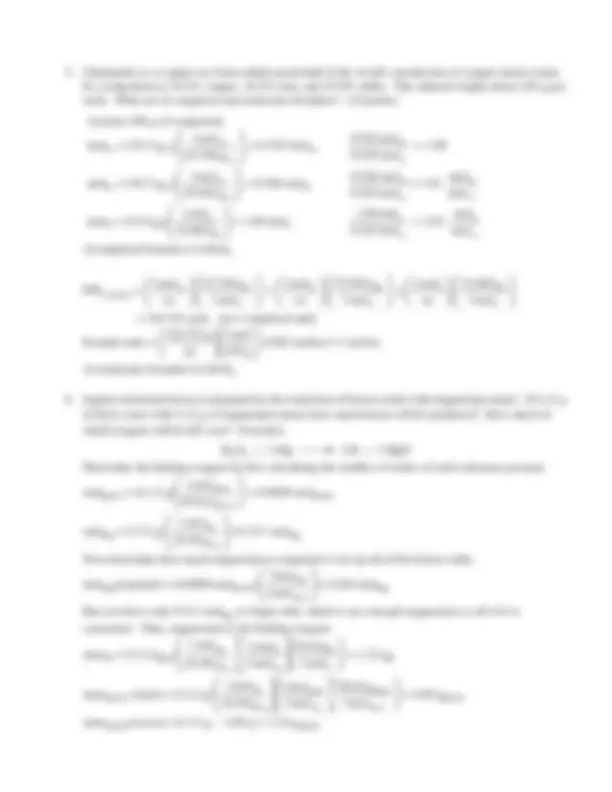



Study with the several resources on Docsity

Earn points by helping other students or get them with a premium plan


Prepare for your exams
Study with the several resources on Docsity

Earn points to download
Earn points by helping other students or get them with a premium plan
Community
Ask the community for help and clear up your study doubts
Discover the best universities in your country according to Docsity users
Free resources
Download our free guides on studying techniques, anxiety management strategies, and thesis advice from Docsity tutors
Material Type: Assignment; Professor: Castellani; Class: Principles of Chemistry I; Subject: Chemistry; University: Marshall ; Term: Fall 2007;
Typology: Assignments
1 / 3

This page cannot be seen from the preview
Don't miss anything!


Chemistry 211 Key 1 Fall 2007
a) the mass is in millionths (10-^6 ) of a gram. b) the mass is in thousandths (10-^3 ) of a gram. c) the mass is in hundreths (10-^2 ) of a gram. d) the mass is in hundreds (10^2 ) of grams. e) the mass is in thousands (10^3 ) of grams.
a) Elements are substances that cannot be decomposed into simpler substances. b) Precision refers to how closely individual measurements agree with the correct value. c) Numbers obtained by measurement are always inexact. d) Mixtures are combinations of two or more substances, each of which retains its own chemical identity. e) Matter is anything that has mass and occupies space.
a) 372 b) 628 c) 701 d) 974 e) 1290
a) K b) Na c) P d) Po e) none of these
a) alkali metals c) chalcogens e) noble gases b) alkaline earth metals d) halogens
a) 78p, 117n, 76e c) 78p, 117n, 78e e) 80p, 115n, 78e b) 80p, 115n, 78e d) 80p, 117n, 78e
a) F-^ b) S^2 -^ c) P^3 -^ d) Ca3+^ e) K+
a) N 2 + 3 H 2 → 2 NH 3 d) C 3 H 8 + 5 O 2 → 3 CO 2 + 4 H 2 O b) 4 Fe + 3 O 2 → 2 Fe 2 O 3 e) CaCO 3 → CaO + CO 2 c) AgNO 3 + NaCl → AgCl + NaNO 3
chemistry – the study of the properties of materials and the changes that materials undergo
weight – the force that gravity exerts on an object
physical property – properties that don’t change the identity of the material when measured
anion – negatively charged ions
isotope – atoms of the same element possessing differing numbers of neutrons
theoretical yield – the amount of product expected based on stoichiometry
Corrosion of aluminum metal is a chemical process. [Problem 1.19a]
Melting of ice is a physical process. [Problem 1.19b]
Pulverizing aspirin is a physical process. [Problem 1.19c]
The mass of a 32 ounce can of coffee is an inexact number. [Problem 1.36a]
The number of students in a chemistry classroom is an exact number. [Problem 1.36b]
Co(NO 3 ) 2 – cobalt(II) nitrate [Practice exercise 2.12c]
ammonium sulfate – (NH 4 ) 2 SO 4 [Problem 2.59j]
NO 2 – nitrogen dioxide [Problem 2.66c]
hydrobromic acid – HBr(aq) [Problem 2.64a]
CH4 (g) + 4 Cl 2 (g) → CCl 4 (l) + 4 HCl(g) [Problem 3.11c]
Aqueous calcium hydroxide reacts with phosphoric acid to form solid calcium phosphate and water.
3 Ca(OH) 2 (aq) + 2 H 3 PO 4 (aq) → Ca 3 (PO 4 ) 2 (s) + 6 H 2 O [Problem 3.12e]